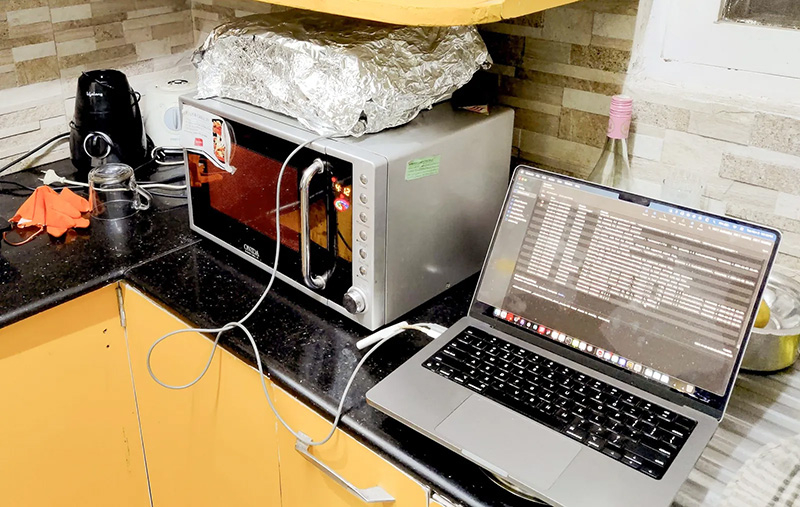After the release of iOS 18.1, the Hearing Health function became available to users of Apple AirPods Pro 2 wireless headphones, allowing them to use the gadget as a hearing aid. For now, this feature is only available in the US and Canada. However, a user from India found a way to bypass the restriction. You need a microwave, technical skills and a lot of patience.

Image source: Wired/Lagrange Point/Rithwik Jayasimha
Rithwik Jayasimha from Bangalore and his friends decided to bypass the regional restriction, but simply changing the IP address did not help, since Apple conducts additional checks to determine the real location. Then a primitive Faraday cage was built based on a microwave oven, which blocks any electromagnetic signals. This is necessary to isolate iPad from other devices and surrounding wireless networks, and prevent it from being located.
The improvised Faraday cage was a cover of aluminum foil placed on the top of the microwave. An iPad is placed in there with an ESP32 connected to it, and then the microwave is turned on to block the signals to the iPad. This worked because consumer microwaves heat food using electromagnetic waves at the same frequency as Wi-Fi signals – 2.4 GHz. Essentially, Indians have turned the microwave oven into a Wi-Fi signal jammer.
The ESP32 controller board sent various requests through hundreds of SSID addresses in California to trick iOS into believing the iPad was in the US. After 4 hours of manipulation in the microwave, the iPad decided that it was now in the USA, which allowed us to turn on the hearing aid mode on the headphones. Enthusiasts have demonstrated that they can bypass Apple’s geo-restrictions on AirPods Pro 2 with a Wi-Fi-only 10th generation iPad connection. They claim that bypassing the restrictions is also possible with a mobile-enabled iPhone or iPad, but it would be more difficult.
The proposed method has enabled the use of AirPods as hearing aids in India. Indian enthusiasts believe that this feature will soon be available in their country. And now, before its release in India, they are determined to help everyone who contacted them launch the feature on their AirPods. They have already developed another, simpler and more reliable Faraday cage to make their manipulations more practical.

The second version of the Faraday cage from Indian enthusiasts
Alan Woodward, professor of cybersecurity at the University of Surrey, said the Indian researchers’ work is “very interesting” and shows how easy it is to bypass the “safeguards” put in place by big tech companies. “This shows that those with technical knowledge can bypass app geofencing relatively easily,” says Woodward. “It’s not like everyone can do it, but they probably know someone who can.”